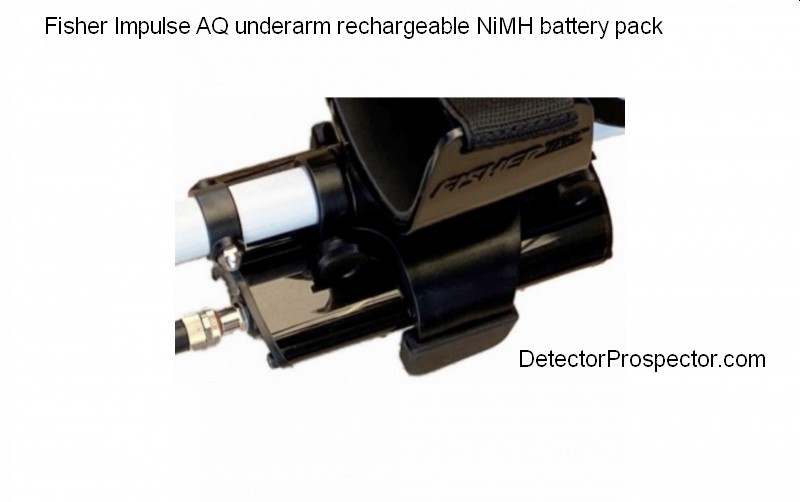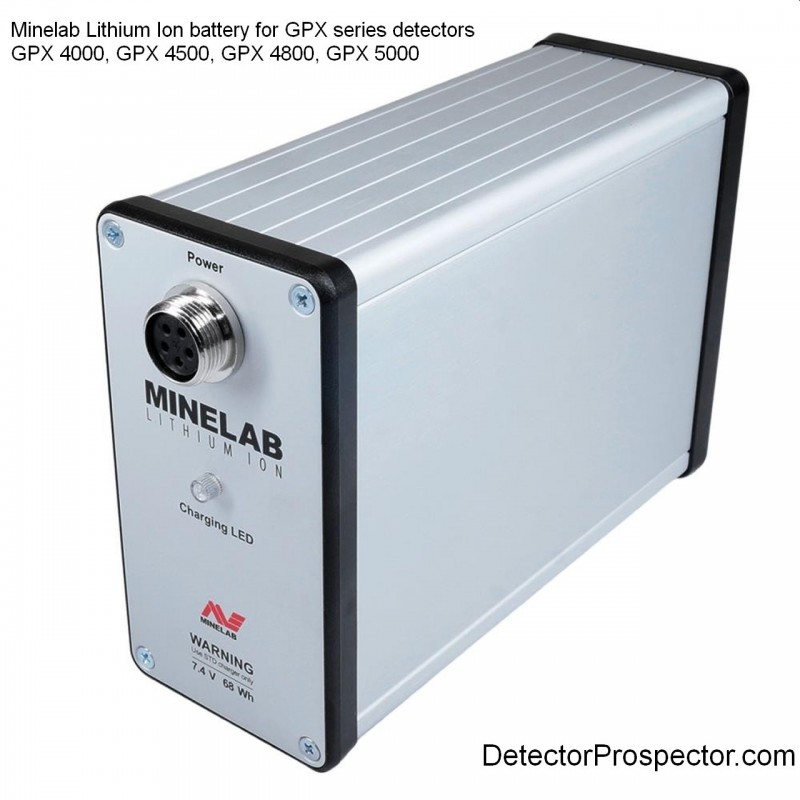-
Posts
19,760 -
Joined
Content Type
Forums
Detector Prospector Home
Detector Database
Downloads
Everything posted by Steve Herschbach
-

New Impulse Video
Steve Herschbach replied to Lance's topic in First Texas - Bounty Hunter, Fisher & Teknetics
I have never had an issue pinpointing non-ferrous targets with a large mono coil, even my 18” mono on my GPX. They detect in the center unless extremely shallow - then under each edge (double blip). It’s long ferrous targets that kill me. They act like magnets, signal off each end, and one end almost always predominates. This creates an apparent “ghost signal” off one end of the target, in my case usually a large nail. In practice this often means a nail directly under one edge of the coil. There are many times I dug a sweet signal only to finally think “this hole is too deep” and when examining the sidewalls with a pinpointer pulled a nail out I’d gone past by a foot. That is while nugget detecting on dry land. Long ferrous in the water and a larger mono coil could be a disaster. From my perspective however a 12.5” mono is not all that large so I’m not too worried about it. The 8” mono will be a piece of cake. -
It seems requirements around shipping or flying with Lithium Ion batteries are increasing. Either intentionally or by mistake. See this post: “Hi forum, I’m desperately looking for a good condition LI battery full size for my GPX 5000. I travelled half way across the world to do some winter detecting Arizona way and my airline refused my battery at check in; both hold and carry on were not permitted. Any one got a battery for sale this would help me out massively. Don't want to buy a new one as I’m only here for a month and can re-unite with mine back home.” Fisher Research was originally designing the new Fisher Impulse AQ with a Li-Ion battery pack but recently switched to NiMH instead for the external battery pack. It may be this decision was prompted by issues like this. It does not bode well for those traveling with large batteries in particular. On my trip to England my having a large Anker USB charger pack in my carry-on got me shunted into a separate full security check. There is a lot more scrutiny on international flights. Just a heads up for anyone traveling with a GPX detector. Integrated batteries like on a Equinox should pose no issues.
-

Coil 7.5” For TDI - Something Added To Cable?
Steve Herschbach replied to Luis's topic in White's Metal Detectors
Same answer regardless of where you bought it. It could have been to try and comply with local regulations regarding EMI emissions. -
Posted previously along with review by person who did the video.
-

Coil 7.5” For TDI - Something Added To Cable?
Steve Herschbach replied to Luis's topic in White's Metal Detectors
Somebody has shrink wrapped a ferrite core over the cable. Some people think this improves coil performance. Probably not but it won’t hurt anything. -

General Metal Detector Type Question(s)
Steve Herschbach replied to nopeda's topic in Metal Detector Advice & Comparisons
Absolutely need to know the composition of the cap and tube to answer the question. It also depends on the composition of the most likely junk in the area of search. Precedent exists. I used to be a surveyor. Old monuments used to have a brass cap on a steel pipe and were located using a utility magnetometer like the popular Schonstedt locator. New monuments are constructed of aluminum which is much easier to store and transport. Magnets are added to make them easily located with a magnetometer. Magnetometers will only detect iron and steel. In areas where trash iron and steel abound this could be problematic. If the access tube is copper or aluminum your best bet would probably be to simply make it larger and more easily located via a large aluminum washer or tag. Work is being done to research the use of RFID tags for some buried applications, the main catch being the frequencies used in tags attenuate quickly in ground mediums. -

Need Some Advice On Gold Detecting With AT Pro
Steve Herschbach replied to N7XW's topic in Garrett Metal Detectors
Not that much. The AT Pro and AT Gold even use the same coils. Most of the difference in the AT Gold and AT Pro is more about the stock coils size than the frequency, and the settings are aimed more at the gold prospectors. The real issue is that in this day and age where nearly everyone is using a detector running over 40 kHz or a high power PI you are severely outgunned compared to the competition. If you hunt public access areas that have seen decades of detecting that competion has been fierce and the finds are getting slim, so a person needs every edge they can get. That said there are not a lot of waterproof options and as your lead tests (do them) will reveal the AT models can detect reasonably small gold. I would recommend the small coils. Other than that you just need to get over a nugget the same size and no deeper than your test targets reveal as reasonable. -

Telescoping Vs Folding Shafts
Steve Herschbach replied to relicmeister's topic in Minelab Equinox Forum
There might be other models. A Google search mostly got Russian website hits. This was just the first one I saw for sale in U.S. -

Telescoping Vs Folding Shafts
Steve Herschbach replied to relicmeister's topic in Minelab Equinox Forum
Here is one on Ebay. I prefer telescoping myself as I don’t need extra weight. -
It’s standard practice when nugget detecting because very weak non-ferrous signals in highly iron mineralized ground can tip to ferrous. The ground overwhelms the signal. This does not mean just tiny targets but even large targets like coins right at the edge of detection depth in highly mineralized ground.
-

Potential Quartz With Gold?
Steve Herschbach replied to Aussieo2's topic in Rocks, Minerals, Gems & Geology
If it swirls around in the water as if it is the lightest thing instead of the heaviest thing it is possibly mica. Another clue would be if the flakes easily split into smaller flakes when poked with a pin... mica. More detailed information on testing quartz for gold by panning -
This is basically just a copy of the review I left for the Fisher F19. The Teknetics G2+ is exactly the same detector but with a different coil and rod setup as normally sold. Electronically and operationally it is the same detector as the F19 with identical performance. I actually kind of prefer the pistol grip design over the S rod on the F19 for comfort but both suit me very well and so frankly its a bit of a toss up for me between the two models. I am a Fisher Gold Bug Pro fan. The machine is lightweight, easy to use, and very effective for what it is designed for. However, the Gold Bug Pro is somewhat feature limited and the G2+ adds some extra capability that many people would welcome - things like a meter backlight or ferrous volume setting, for instance. This 19 kHz model is a very solid performer on low conductors like gold and small targets like ear rings or small gold nuggets. The 19 kHz platform is a little weak on silver coins but still does very well as a coin hunter. The main thing I like is the light weight, solid performance, and very simple operation. The 19 kHz circuit is also one of the best I have used for ignoring electrical interference in areas where other machines may have issues. To repeat, the Teknetics G2+ is the same unit electronically as the Fisher F19. The only real difference is the rod and grip assembly and the coil that comes stock. The F19 has the classic "S" rod handle, while the G2+ has a modified "S" rod with pistol grip design some people may prefer.
-
This is a duplicate of the review I left for the standard F19. The F19 Ltd is exactly the same detector except offered with a camo paint scheme. I prfer the plain black and gold color scheme myself so lean F19. Other than that however they operate and perform identically and I would use either from that standpoint. I am a Fisher Gold Bug Pro fan. The machine is lightweight, easy to use, and very effective for what it is designed for. However, the Gold Bug Pro is somewhat feature limited and the F19 adds some extra capability that many people would welcome - things like a meter backlight or ferrous volume setting, for instance. The main thing however is that if you want the 10" x 5.5" elliptical coil for the Gold Bug Pro you have to get it as an accessory coil, or buy a two coil package. It is odd to this day that the Gold Bug Pro, a machine aimed at gold prospectors, is not available with the 10" elliptical coil as the stock coil. For this reason I aim people who want that coil at the F19 because you can get it stock with that coil. You get all the 19 kHz performance of the Gold Bug Pro, plus extra features, by getting the F19, and for about the same price as a Gold Bug Pro two coil package. Either way, this 19 khz model in all its flavors is a very solid performer on low conductors like gold and small targets like ear rings or small gold nuggets. The 19 khz platform is a little weak on silver coins but still does very well as a coin hunter. The main thing I like is the light weight, solid performance, and very simple operation. The 19 kHz circuit is also one of the best I have used for ignoring electrical interference in areas where other machines may have issues. Finally, do note that the Fisher F19 is the same unit electronically as the Teknetics G2+. The only real difference is the rod and grip assembly and the coil that comes stock. The F19 has the classic "S" rod handle, while the G2+ has a modified "S" rod with pistol grip design some people may prefer.
-
I used both the earlier CZ-20 and the CZ-21. I am a fan of the CZ series in general, and consider the CZ-21 to be one of the two VLF detectors I personally favor for serious water detecting, the other being the Minelab Excalibur. I am purposefully excluding detectors waterproof to 10 feet when I say this. The CZ-21 at 250 ft and Excalibur at 200 ft depth capability are far more robust detectors for those that truly intend on using a detector almost exclusively in the water. Detectors good to 10 feet are ok for mask and snorkel use but the CZ-21 is a true SCUBA capable detector. The downside is that means it is built like a tank with the weight that goes along with that. Unless you actually need that 250 ft depth rating there are far lighter and less expensive options available now. One small thing tipped me from the CZ-20/21 to the Excalibur and that is the way its audio discrimination was designed for coins instead of jewelry, and audibly puts nickel range targets into the high tone coin category. As a detector designed more for jewelry use the CZ-21 should read nickel range targets as mid-tone. That it does not means that to use the discrimination you either have to accept on passing on nickel range targets if you dig only the mid-tone targets, or just default to a simple ferrous/non-ferrous setting. This flaw largely negates the benefit of even having a mid-tone audio response. The Excalibur dies not suffer from this flaw. That is unfortunate as I rather prefer the CZ-21 otherwise as having a standard control panel with knob arrangement that can be easily hip or chest mounted out of box without extra accessories. The battery setup is more straightforward than that on the Excalibur. The tone arrangement is also simpler and more understandable than the more complex audio produced by the Excalibur, again excepting the aforementioned flaw. Finally, the CZ-21 offers a true all metal ground balance mode which I like a lot. All in all a great detector but I wish Fisher would have updated the machine to put the nickel range back at mid-tone, which would make it a far easier choice for me as compared to the Excalibur. It's really that one thing that puts my off the CZ; other than that it is a near perfect VLF machine for use to SCUBA depths. Hip-mounted it actually is also a very effective coin detector .
-
I am very sorry to hear that. Many people including me think well of Reg. Prayer sent.
-

Any Texas Gulf Beach Hunters Here?
Steve Herschbach replied to Dan(NM)'s topic in Metal Detecting For Jewelry
Anyone can post links. -
The CTX represents the be all and end all of attainable depth and discrimination accuracy? No way to improve ferrous discrimination beyond what we have? All hope for future improvement in the technology is dead and gone?
-
Probably was one bad cell then. The rest may be good.
-
A good battery check meter is invaluable. Even with new batteries one bad one in the set can cause problems. I have to also admit I have found myself with one battery in the set placed in backwards. It works for awhile until it does not.
-

Broken Ears ... Fix / Prevention?
Steve Herschbach replied to castleberry's topic in Minelab Equinox Forum
They have replaced some under warranty in the past... 800 Coil Tabs Coil Tab Reinforcer -
My bad! I was trying to say I do not need more depth... I need discrimination to the full depth we already have. I'm digging deep enough, I just don't want to dig any more nails at that depth. Forget GPZ even a GPX with 18" mono coil finds nails deeper than I want to dig anymore. There really are some hard limits on maximum depth and getting just one more inch is like a moon shot. Discrimination at depth has not begun to catch up. We know the depth is possible because we are already there. Surely there is a way to get better discrimination than what we currently have.
-
If a CTX with large coil was as good as a GPZ for depth everyone would be prospecting with them. I’m asking for something that does not exist.
-
If you tune out saltwater you will tune out thin chains. That is just a fact of saltwater detecting and no new detector is going to change it. A detector that will detect the chain will detect the saltwater. Tune out the saltwater, can’t detect the chain. There is a reason you don’t use a Gold Bug 2 in saltwater. I tried to explain that a dozen times with the Equinox and some people absolutely refused to listen. Every new machine it seems people think we are going to revoke the rules of physics that govern this technology. It will be no different with the AQ.



